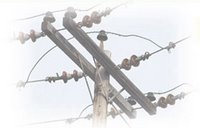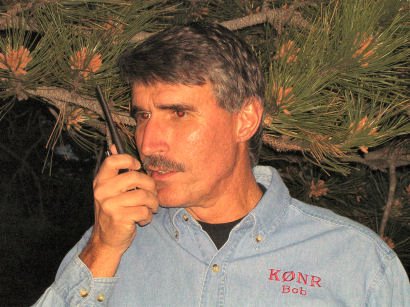Slow Death for Broadband Over Power Line (BPL)
 The ham radio community has been rightly concerned about the radio frequency interference potential from most Broadband Over Power Line (BPL) systems. The ARRL continues to do battle with the BPL providers and the FCC over specific RFI issues. Most recently, the ARRL faced the FCC in the US Court of Appeals, challenging the FCC's regulatory action concerning BPL. The ARRL BPL page shows highlights of BPL activity over the last year.
The ham radio community has been rightly concerned about the radio frequency interference potential from most Broadband Over Power Line (BPL) systems. The ARRL continues to do battle with the BPL providers and the FCC over specific RFI issues. Most recently, the ARRL faced the FCC in the US Court of Appeals, challenging the FCC's regulatory action concerning BPL. The ARRL BPL page shows highlights of BPL activity over the last year.At the same time, the ARRL Lab Manager Ed Hare, W1RFI, has been working the technical issues with the BPL industry, public utilities, the IEEE and other interested parties. A few BPL equipment companies have taken the amateur radio interference issue seriously and have notched out the ham bands from their devices. Specifically, HomePlug technology and systems based on it (such as BPL systems from Current Technologies ) appear to avoid interference to amateur radio equipment. Other users of the HF spectrum, including shortware broadcast stations, may be hosed since it is only the ham bands that are notched out. While these systems have taken steps to address inteference to amateur radio receivers, interference from amateur radio transmitters is still a big risk.
However, none of this really matters.
The economics of the situation will drive BPL out of the picture, or at least keep the technology limited to certain niche applications. BPL has to overcome the same cost-per-subscriber issue that cable modems and DSL providers face. The myth that BPL will someone light up rural areas with highspeed internet is just that: a myth. The economics don't support it. The number of repeaters and infrastructure required on the power lines to cover a rural area is just too expensive. This forces BPL to be deployed in areas that are more densely populated....usually areas already served by cable and DSL. Because of this reality, the BPL equipment companies are rapidly moving away from the "broadband for everyone" message and instead are focusing on helping the utilities manage the electrical grid. This "smart grid" story sounds green and plays well into today's concerns about efficient use of energy, but it does not support the broadband internet vision of the FCC. See the letter to shareholders from the Ambient CEO for more insight into the financial stability of BPL.
Duke Energy was a big proponent of BPL, working with Ambient Corp on a major BPL program. Recently, Duke has decided to "move away from BPL" in favor of wireless technologies, dealing another blow to the BPL industry. In the long run, wireless technologies are the biggest competition for BPL, as they have the potential of covering areas not served by cable and DSL in a cost-effective manner.
Where does this leave the amateur radio community? We will continue to experience RFI at certain isolated locations as various utilities keep trying to make BPL work. There will continue to be battles with the FCC and the utilities over specific interference problems. Systems that are "ham friendly" will fare better than the others. But mostly, BPL will continue its slow journey to the scrap heap of technologies that don't work economically.
73, Bob K0NR





